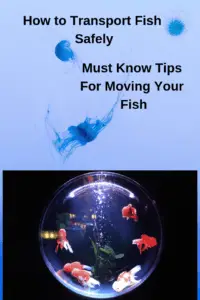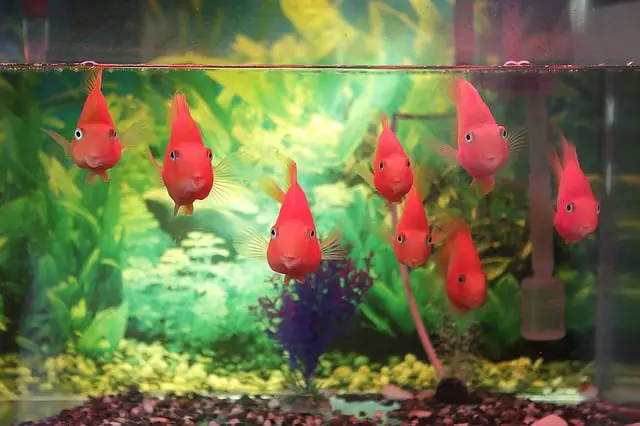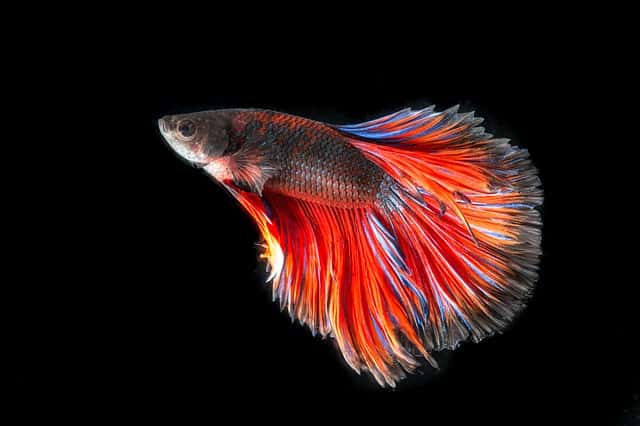Several reasons can pop up where we need a safe way to transport our fish and aquariums. For most, it could be moving to a new home or simply needing to change aquariums. In the beginning, I was clueless about how to do this correctly. I wanted to know how to transport fish safely. I had to do some digging to get the best approach and here is what I learned.
First, moving fish is never recommended if it can be avoided. It’s stressful for the fish, and some may simply die from the move. If you move the entire tank, that’s the most desirable method. Especially if the filtration system can continue to run. If you can’t, simply transfer the fish to a holding container, drain the tank and preserve some of the water. Maintaining some of the water will help keep some of the needed bacteria.
For some, the above-mentioned methods can’t be done, or they are not feasible. If this is the case, let’s cover some other related questions you may have.
What Is the Best Way to Transport Fish?
If you fall into the category where it is necessary to move your fish, you may still want further elaboration on what the best way to transport your fish is. Here’s some additional information from what I have learned through the process. Here’s a detailed list of some of the steps you can take to help with the safe transportation of your fish.
- Preserve as much of the aquarium water as possible
- You decide between either 5-gallon buckets or a bag to transport the fish (ensure enough air is available)
It seems short and sweet, but that’s about all you can do for the actual fish to have a chance at a safe trip. Just keep in mind, as stated before. Fish get heavily stressed in these situations, and it’s highly likely you lose a fish or two during the moving process. We still need to cover some of the other specifics necessary to make a move complete.
What About the Other Elements of My Aquarium?
When I was in your position, I was happy to find the information needed to at least attempt to move my fish safely. However, I had no clue what to do with the rest of the aquarium components. I had to do some initial digging on this as well and here is what I learned. For the plants in your aquarium, place them in separate bags in water from the fish tank before draining. This will preserve the bacteria and keep the plants alive.
For the remaining water, it’s now safe to drain it and remove all the other decorations from the tank. When it comes to your filter media, you need to make a judgment call on the length of the move and the best approach.
- Short Move= Simply Place Filter Media in A Sealed Bag and Re-Assemble at New Destination
- Long Move= Discard and Clean all components of the filter Media.
When dealing with the other components of the tank such as pumps, you can simply pack these just like you pack your kitchen plates. Just wrap them up, place in a box and reassemble when the move is complete. This won’t cause any harm to the hardware.
Don’t forget to at least bubble wrap or protect these in some fashion. Any tough moving conditions could cause these to crack or leak in the future if not handled properly.
How Do I Transfer My Fish to A New Tank?
If you’re not moving and simply need to transfer fish into a new tank, you may have some questions as well. I had the same issues during the process, so I had to do some research. Here’s what I learned. First and foremost, if you are introducing any additional fish to the new tank, be sure the fish are compatible with each other. Most fish store experts or a veterinarian should be able to help you with this question.
Also, be sure the new tank is the proper size. The fish need adequate space in the new tank/environment. In most circumstances, it’s probably not the best idea to downgrade fish tank size or to introduce new species to the tank without speaking to an expert. Doing so may result in having fish that will grow too large for the new environment/tank.
Next and a crucial piece to the puzzle is testing the pH levels of the water in the new tank. We have a very informative post on understanding pH levels in your tank that you can view here.
Once you have these tasks completed, it’s okay to feed the fish you currently have in the tank before introducing the new fish. If you aren’t just adding fish but straight transferring, you can skip this step.
Some even recommended dimming or turning down lights to reduce stress levels on the fish.

How Do You Transport Fish in A Car?
We forgot to detail one of the most important pieces to the question and something I was extremely hesitant to do during my move. How do you transport fish in a car? Here’s what I found out. First and foremost, do some initial planning. Time the trip out and choose the container you intend on using for the transport. Ensuring oxygen is plentiful of course. Some individuals use buckets and some used other sealed containers or bags. This may seem like common sense but use clear bags. If you don’t, how do you plan on visually inspecting the fish and its safety?
When you do choose your transportation method and container. You want to make sure it can provide oxygen but also be watertight. This will reduce spilling and several other issues if you skip this step.
What If I Want to Keep the Fish in the Tank During the Move? Can You Transport a Fish Tank with Water In it?
This is surprisingly an option as well. The only issue you have is that you may still have to remove the fish from the tank for a short period while you remove other tank decorations and elements within the tank. It’s also advised to get the water level in the tank reduced to eliminate unneeded spillage.
Personally unless you only have 1” of water in the bottom of the aquarium and nothing else other than the fish and the water I would not attempt this especially if your tank is a heavy glass aquarium.
Objects from the tank moving around can harm your fish and the weight of the water sloshing back and for could easily crack the glass or the silicone seal. The weight of an aquarium without water is fairly heavy and adding the weight of water is just asking for trouble.
If you’re interested in finding out about the approximate weights of different sized tanks check out my article on how much aquariums weigh.
If you have an acrylic tank then the tank itself will be drastically reduced even with a bit of water inside. The chances of your acrylic tank cracking are a lot less as well.
How Long Do You Leave Fish in A Bag Before Putting Them in Your Tank?
This just feels weird when going through the moving process, but it’s recommended.
When you reach your destination, you can just place the fish in the tank (while still in the sealed bag) and allow it to just “hang out” for up to about 30 minutes. This will give you adequate time to situate and adjust the other décor and elements of the tank. It’s just like purchasing fish and bringing them home for the first time.
However since these fish were in this environment already there is no need to place them in a quarantine tank like you should do when you first bring fish home from the store. To learn about quarantine tanks please check out my “How to set up a Quarantine Tank article”
This ultimately allows the water temperature to stabilize. Once you have situated the rest of the tank and have completed set up, you can release the fish into the tank. Everything needed to complete the move should be just about done. If you transferred the fish in a container or bucket, you wouldn’t be able to allow the fish to adjust to the tank at the new location.
If this is the case, situate your tank and merely place the fish into the tank when things are ready to go.
It is worth mentioning that even though the above is one of the most common ways when purchasing fish and bringing them home for the first time it is still sound advice to use this method when transporting fish from one location to another for good reason.

Be Sure to Keep an Eye on The Situation
When completing a move or transporting fish into a new environment, it’s important to keep tabs and make sure the fish is adjusting without issue. Sometimes, things may feel like they were completed correctly but problems may still present themselves.
Ensure all pumps and filtration are working correctly. Test the pH levels and keep an eye on how the fish is adjusting to the move and being removed and placed back into the tank. This doesn’t need to be an anxiety-filled or stressful long drawn out situation. Keep tabs on the situation and adjustment for a few days and see how things are progressing.
Putting It All Together- What Methods Have You Used to Transport Fish Safely?
Just remember that when introducing new fish, transporting fish or simply changing tanks, it’s very common to lose a fish from time to time. It creates a great deal of stress for the fish and accidents to happen during this process.
Try your best to preserve some original tank water, keep monitoring water temperatures and pH levels and attempt to find a safe method or container/bag to transport the fish in. you could even ask your local fish store if they have bags for your fish move.
Overall it shouldn’t be overly complicated to successfully complete the transportation of the fish but try to be diligent about preparation and planning to ensure you give the fish the best overall chance of adjusting without issue.

Related Posts
How Long Can Fish Live During Shipping?






